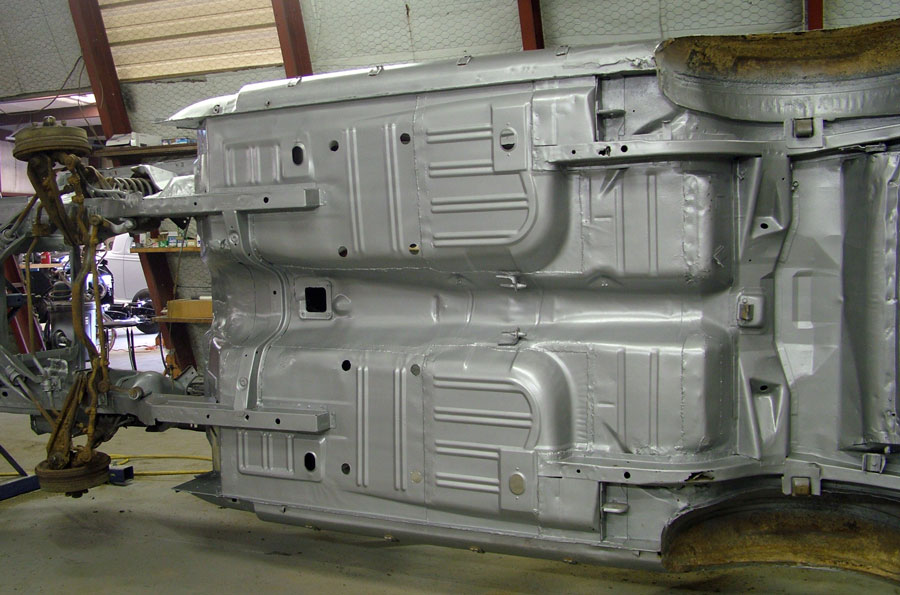Rust – the bane of all truck, car and equipment owners, especially older vehicles. It looks rather innocuous, like a tiny blemish, that’s often ignored at first sight. But left unattended, it spreads fast and wreaks havoc on body panels and compromises the structural integrity of frames and axels.
So, how do you prevent your old cars and trucks from rust damage? Read on to learn the secret!
Tackling Rust Head-on
When it comes to ensuring the safety of your old cars and trucks, there’s no silver bullet to preventing rust. But a little bit of pro-activity goes a long way to both, preventing rust and discovering (and hopefully treating!) its signs early on. And here’s how you do it:
- Regular inspections: Because they are so heavily exposed to the roadway, wheels and bumpers are some of the common starting points where rust takes hold. Make sure you hose them down well so you can inspect what’s under the dirt and grime. Don’t forget to inspect the undercarriage too. If there’s potential for rust buildup, you need to get a look at it ASAP!
- Check spots where components join: Older cars and trucks are especially susceptible to rusting where two components join – like doors, trunks, hood-to-fender joints. That’s because, over time, as the parts rub together, any manufacturer-applied rust protection gradually wares off
- Evict Rust’s Best Friend ASAP: If your car or truck has been in water (rain, snow, ditches, trenches), never let rust’s best friend stick around on the vehicle for too long. Look carefully in the trunk – often the drain holes clog, and that leads to water accumulation and rusting
- Regular washing, rinsing and wipe-downs: It’s the most common sense of advice, but it’s amazing how many vehicle owners forget to do it! In older trucks and cars, which may have inherently weaker rust protection, practicing frequent vehicle hygiene goes a long way in tackling rusting head on. But it’s not just the washing and rinsing that needs attention – it’s a nice hard wipe-down too. If there are corrosive elements on the body or underside, this hygiene protocol dislodges them before they do damage.
Dealing With The Aftermath
Despite all this, it’s possible that some forms of rusting might occur. Don’t worry – it’s easy to deal with the issue when you’ve caught it in its early stages. Early detection prevents more extensive damage subsequently.
- If you are a DIY enthusiast, you could first scrape the rust off with fine sand paper or a sharp (not pointed!) object like a scraper or razor blade. This provides two benefits: Firstly, it allows you to view the extent of the damage underneath the rust, and secondly, it prevents further rust build-up in that area
- Next, apply a good quality rust arrestor to the area. These products typically come as a full kit – complete with applicators (brush, roller etc.), so you’ll have everything you need to do battle with rust
- Let the arrestor take hold. This requires it to dry completely. Depending on the type of arrestor and the size of the area of rust-repair, this could take a couple of hours
- Prime the patch over the dried rust arrestor, and let the primer dry completely
- Use a suitable touch-up paint to paint over the area
Of course, this DIY approach is great for preventing rust, in a small spot, from invading the rest of your old car or truck. A more practical solution is to think ahead and take steps that tackle the rust challenge head on. And the best way to be proactive about fighting rust, is to regularly use a professional grade automotive rust inhibitor coating.
These products are great at fighting rust at the forefront of the war – before it attacks the car or truck. You can apply them directly over rusted surfaces, or even over painted areas. They are scratch and chip resistant, and they also protect the vehicle against long-term UV harm.
Typically, you can apply this protection every two years or so. However, with older cars and trucks, where there’s greater risk of rusting, it may warrant more frequent application.
Unveiling the Secret
The secret lies in the age old saying: Prevention is better than the cure! So, if you want your old cars and trucks to have an even longer, healthier, rust-free existence, then you need to tackle rust head on and prevent it from occurring in the first place. Thankfully, that’s not a huge challenge with the right products in your anti-rust arsenal.
Rust Bullet has a whole range of rust prevention products that can help in your fight against rust. And if, like millions of old car and truck owners, your vehicle does start showing signs of rusting, they have a range of solutions to deal with that too!

